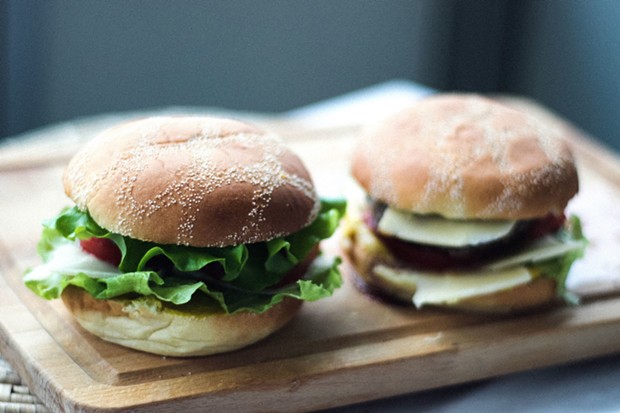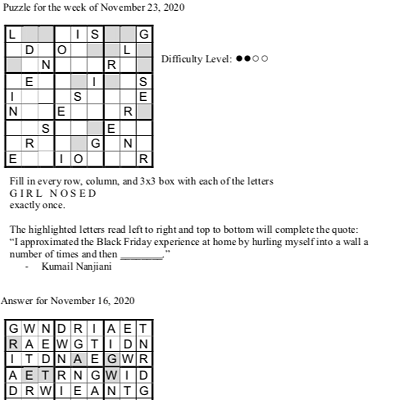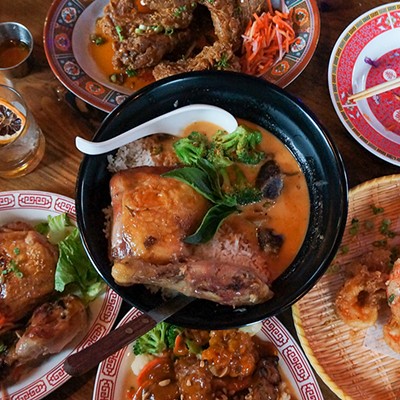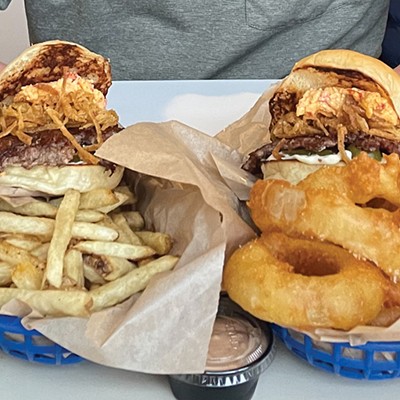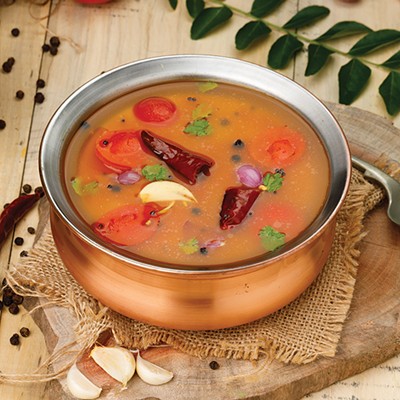[
{
"name": "Air - Ad - Rectangle - 2 pack - Inline Content - 1",
"insertPoint": "1/2",
"component": "16844684",
"requiredCountToDisplay": "6"
}
,{
"name": "Air - Ad - Rectangle - 2 pack - Inline Content - 2",
"insertPoint": "1/4",
"component": "16844686",
"requiredCountToDisplay": "20"
},{
"name": "Air - Ad - Rectangle - 2 pack - Inline Content - 3",
"insertPoint": "3/4",
"component": "16844687",
"requiredCountToDisplay": "17"
}
]
In the latest installment of Farmer's Diary, chef Lindsay D. Mattison weighs in on the cost of food—good food, that is.
You may have noticed: going out to eat is pretty damn expensive. The $8 half-pound burger is a thing of the past and casual chain restaurants that used to offer two-for-one dinners are dying. Everywhere you look, you’ll find the same menu buzz-words: farm-to-table, locally-sourced, organically-grown. Our beer is brewed around the corner, that vodka is distilled in town, and wine is made from organic, biodynamic grapes. Even coffee isn’t just a bag of beans anymore – it’s fair trade, single origin or responsibly grown. All of this drives the price tag up…and up…and up. If you’re wondering if these increased prices are worth it…well, that really just depends.
As a chef who regularly geeks out on food cost, I think it is. I spent my career building spreadsheet after spreadsheet to understand the true cost of food. Because I believe in responsibly-sourced ingredients, I had to figure out how to make it work instead of buying less expensive options.
Heritage-breed, pasture raised pigs couldn’t taste more distinct from the “other white meat” bred for fast growth, and organic radishes freshly picked out of the ground taste crisper and spicier than the kind that travels hundreds of miles to reach the grocery store. It may be spendier, but those foods taste better while also supporting your local community – making them an even worthier cause.
But not every restaurant sources responsibly, and even commodity food prices have increased. The numbers just don’t work for cheap food anymore. You can still get a pretty inexpensive meal at McDonald’s, but did you know their value burger patties contain less than two ounces of meat? That’s four times less meat than you’ll get in a restaurant (not to mention the quality of their ingredients). It’s because you can’t just look at the cost of ingredients alone. The real cost of food is hidden behind the rent, lights, water, labor and credit card transaction fees. Selling your product for a value price while managing all those costs is trickier than you might think.
For example: look at a half-pound cheeseburger. Theoretically, let’s say one costs $3 in ingredients alone. Then, there are the all things you can’t charge for: like plastic straws, to-go containers, ketchup, sugar packets and all those bottles of hot sauce. Sorry to burst your bubble, but those things aren’t actually free. We’ll tack on an extra 30 cents to every plate to cover those costs. Keep in mind that this sale has to cover all of your expenses, so you can’t just double the cost and expect to rake in the money. You’ll need to charge $9 to $11 if you want to make things work.
Now, let’s assume that commodity food isn’t your bag. You start sourcing locally grown beef, and maybe you buy a better bun from a nearby bakery. Trade in those Mexican-grown tomatoes for heirloom varieties grown around the corner and turn your store-bought toppings into from-scratch aioli and housemade icebox pickles. Guess what? The cost of everything just went up. Now, you’re looking at charging $14 to $16 for a regular cheeseburger.
But that’s the thing: it’s not exactly regular anymore. The beef is full-flavored and juicy, and man, will that bun really tie the room together. Your homemade condiments and toppings add depth and make eating that burger an over-the-top experience. Put it all together, and you’ll leave feeling pretty good about the whole thing. THAT’s why it’s worth it to go all in for that sustainably-sourced meal.
As more and more restaurants adopt this model, we’ll find ourselves talking nostalgically about that $8 burger the way your grandpa talked about nickel candy. That sounds ridiculous because there’s no way you would trust any food today that only cost a nickel. Wouldn’t you wonder what corners they cut to make it work?
At the end of the day, if you love that McDonald’s burger, then I’m not here to judge: you go ahead and live your truth. But, if you’re looking for good food that’s prepared by people who support the local economy and pay their employees a living wage: get ready to shell out the dough to back your endorsement.
Lindsay D. Mattison is a professional chef and food writer. Before she moved to Durango, CO, in 2016, she was the chef at Jackson’s Corner. Contact her at [email protected].
You may have noticed: going out to eat is pretty damn expensive. The $8 half-pound burger is a thing of the past and casual chain restaurants that used to offer two-for-one dinners are dying. Everywhere you look, you’ll find the same menu buzz-words: farm-to-table, locally-sourced, organically-grown. Our beer is brewed around the corner, that vodka is distilled in town, and wine is made from organic, biodynamic grapes. Even coffee isn’t just a bag of beans anymore – it’s fair trade, single origin or responsibly grown. All of this drives the price tag up…and up…and up. If you’re wondering if these increased prices are worth it…well, that really just depends.
As a chef who regularly geeks out on food cost, I think it is. I spent my career building spreadsheet after spreadsheet to understand the true cost of food. Because I believe in responsibly-sourced ingredients, I had to figure out how to make it work instead of buying less expensive options.
Heritage-breed, pasture raised pigs couldn’t taste more distinct from the “other white meat” bred for fast growth, and organic radishes freshly picked out of the ground taste crisper and spicier than the kind that travels hundreds of miles to reach the grocery store. It may be spendier, but those foods taste better while also supporting your local community – making them an even worthier cause.
But not every restaurant sources responsibly, and even commodity food prices have increased. The numbers just don’t work for cheap food anymore. You can still get a pretty inexpensive meal at McDonald’s, but did you know their value burger patties contain less than two ounces of meat? That’s four times less meat than you’ll get in a restaurant (not to mention the quality of their ingredients). It’s because you can’t just look at the cost of ingredients alone. The real cost of food is hidden behind the rent, lights, water, labor and credit card transaction fees. Selling your product for a value price while managing all those costs is trickier than you might think.
For example: look at a half-pound cheeseburger. Theoretically, let’s say one costs $3 in ingredients alone. Then, there are the all things you can’t charge for: like plastic straws, to-go containers, ketchup, sugar packets and all those bottles of hot sauce. Sorry to burst your bubble, but those things aren’t actually free. We’ll tack on an extra 30 cents to every plate to cover those costs. Keep in mind that this sale has to cover all of your expenses, so you can’t just double the cost and expect to rake in the money. You’ll need to charge $9 to $11 if you want to make things work.
Now, let’s assume that commodity food isn’t your bag. You start sourcing locally grown beef, and maybe you buy a better bun from a nearby bakery. Trade in those Mexican-grown tomatoes for heirloom varieties grown around the corner and turn your store-bought toppings into from-scratch aioli and housemade icebox pickles. Guess what? The cost of everything just went up. Now, you’re looking at charging $14 to $16 for a regular cheeseburger.
But that’s the thing: it’s not exactly regular anymore. The beef is full-flavored and juicy, and man, will that bun really tie the room together. Your homemade condiments and toppings add depth and make eating that burger an over-the-top experience. Put it all together, and you’ll leave feeling pretty good about the whole thing. THAT’s why it’s worth it to go all in for that sustainably-sourced meal.
As more and more restaurants adopt this model, we’ll find ourselves talking nostalgically about that $8 burger the way your grandpa talked about nickel candy. That sounds ridiculous because there’s no way you would trust any food today that only cost a nickel. Wouldn’t you wonder what corners they cut to make it work?
At the end of the day, if you love that McDonald’s burger, then I’m not here to judge: you go ahead and live your truth. But, if you’re looking for good food that’s prepared by people who support the local economy and pay their employees a living wage: get ready to shell out the dough to back your endorsement.
Lindsay D. Mattison is a professional chef and food writer. Before she moved to Durango, CO, in 2016, she was the chef at Jackson’s Corner. Contact her at [email protected].

